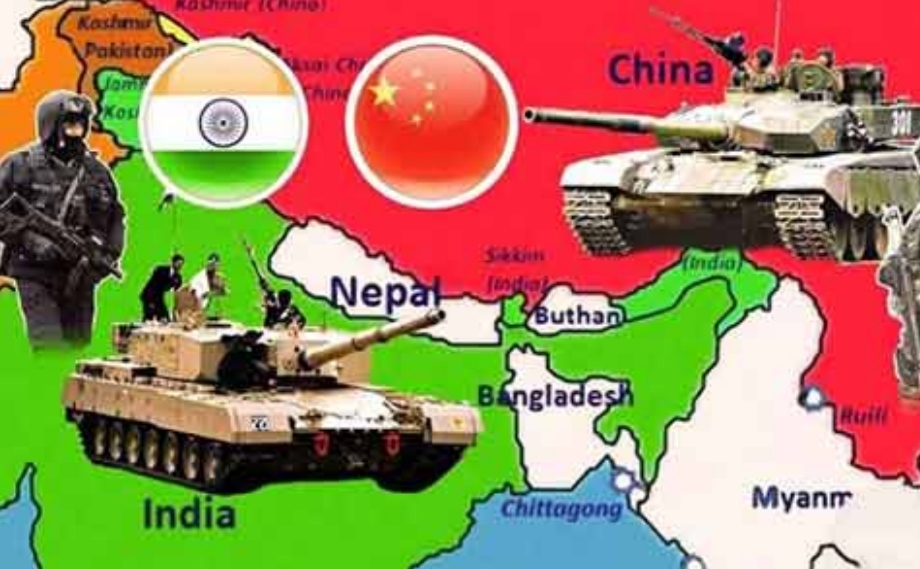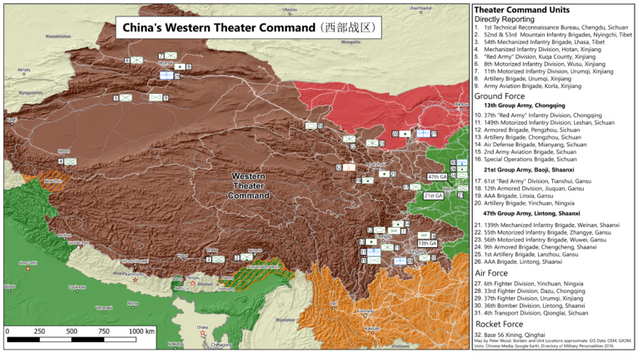Indian Army Fully Capable Of Taking The Battle Across Occupied Tibet Into China

By
Colonel Awadhesh Kumar, Special Forces, Veteran
India has been slowly strengthening its infrastructure along the Northern and North Eastern borders. Over the years, India has developed very accurate ballistic and cruise missiles capable of reaching targets all over China.
India has also developed close relationship with Israel and France and maintaining strategic relationship with Russia. USA, Japan and Australia too have been trying to move Closer to India, particularly to contain growing China since last few years. Vietnam and other ASEAN nations are also close to us as they are quite wary of China.
With all the above and because of the peculiarity of the terrain, even with a numerically Smaller forces, India is fully capable of matching the Chinese military capability in all spheres.
China-India relations never fully recovered from the 1962 war in which Chinese troops seized territory from India on their Himalayan border. Around 5 years later, Chinese tried to repeat their 1962 in Sikkim Sector and were badly bruised. They suffered a large number of casualties and the highly accurate Indian artillery fire took a heavy toll.

As shown in the above map, normally Chinese have just three brigades on the Indo Tibetan Front several times more of the Indians.
Recently, the Indian and Chinese forces have faced each other across the Line of Actual Control (LAC) which is 4050 km long border between five Indian states/ UT and occupied Tibet. China has built-up a lot of infrastructure in occupied Tibet to improve access to the Peoples Liberation Army (PLA).
Recently It has also moved in Type 15 light tanks designed for the mountainous regions. However all these are not adequate to mount a major offensive with the required superiority of forces.
China has developed its military power in the twenty-first century. Numerically on paper China has much larger Forces than India. India possesses only around 800 combat aircraft to China’s 1,700; 14 submarines to the PLA Navy’s roughly 60; and lesser number of rocket artillery systems to China’s 1,550.
However India is able to match China in all spheres due to various reasons. Though India is not as wealthy and devotes less of its budget to defense spending, it has been spending on key elements or force multipliers. Moreover, India’s defense acquisitions process has acquired these most advanced items from Israel, France, USA and Russia and have integrated them well with existing systems.
The Indian DRDO has also worked wonders in selective fields. The French Rafael will initially be with IAF with just two Squadrons but will have the capability of ten J20 Squadrons of the Chinese. In addition the Indian Tejas will now be entering service to provide the much required numbers.
To quickly increase numbers, India has begun encouraging foreign arms producers to follow their “Made in India” idea thorough negotiations resulting in good quality products.

Chinese have a numerically superior Army, nearly twice the size of Indian Army but with less than 10th of the battle experience. A large portion of this will be required to defend its vast coast line and also to keep an eye on its internal fissures. Also a very large force cannot to be deployed all of a sudden on to the Tibetan plateau. Rail, road, air infrastructure is still not adequate for sudden move.
Then the logistics required to sustain such large force for a longer duration of built up will also be a big constraint. As it is Troops require several stages ( and at each stage, several days ) of acclimatization before they can be effective at the heights at the LAC.
The time taken to build up will thus provide India with adequate preparation time. Next the geography dictates that the huge Chinese Forces cannot be launched into India simultaneously. There are only a few axis of ingress and large invading forces will get boxed in dangerously. The Chinese Air Force is also hampered badly by this high altitude geography. Their combat fighters will be having just one fourth of haul capability in weapon systems.
Even logistics will be hampered due to degradation of lift capability of their transport aircrafts and helicopters thanks to high altitude. Then a sizeable portion of the PLAF has to defend the coast and the South China Sea, especially the Strait of Taiwan. Another problem for PLAF is that around 50% of its fleet comprises Third and even Second Generation flying machines.
The four Indian Corps deployed deployed along the Tibetan Front are well fortified. Unlike 1962, Chinese will now require a massive Superiority of at least 24 x Corps to think of any victory.
Apart from the defensive Indian Corps, the newly raised 17 Corps of India has the ability to take the liberation battle deep into occupied Tibet. The Tibetan Government in Exile will be there to eagerly exploit the situation to its advantage both politically and the militarily with help of guerrilla warfare.
The Indian Navy, In Fact Will Be Playing The Main Role, That is To Choke the oil and logistic jugular vein of the Chinese passing through the Indian Ocean Region.
The Chinese know all these things quite well and therefore had wisely backed down during Dokalam crisis and even during the Maldives crisis. Therefore, it’s unrealistic for China to try and play military games by threatening India with now their worn out tactics of “ salami slicing “.
India has significantly built up ground forces in the Himalayas in recent year, and is also moving towards creation of unified Theatre Commands.
India’s strategy to relieve pressure on its Himalayan defences may soon change to threaten counterattacks into Chinese territory. Towards that end, India has prepositioned mechanized units at several places to launch offensives into Tibet in the event of a war.
These tanks are much heavier than the light tanks of the Chinese. Once they breakout on the Wide Tibetan plateau then Chinese will be running towards Beijing before stopping.



